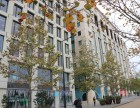Fujitsu delivers critical cooling for global-communications company

Fujitsu Air Conditioning (UK) has supplied VRF heat-pump systems for the new office building of global-communications company Havas Media Group at 3 St Pancras Square in London. This imposing building was designed by Porphyrios Associates and comprises 11 storeys, including three private roof terraces.
Wall-mounted fan-coil units from Fujitsu were chosen by consultant Troup Bywaters + Anders to provide critical cooling to the UPA, SER and AV rooms. There is a 2N resilience arrangement in each room so that only half of the fan-coil units will be operating at any one time. The others could be energised in the event of a changeover of circuits or in the event of a failure.
Fujitsu also supplied its latest central touch-panel controller, which has been interfaced with the BMS and is capable of remote internet access, enabling the contractor to change temperature settings, alternate the use of circuits and provide full fault alert and remote diagnostic capability.
Asim Naseer, senior mechanical engineer at Troup Bywaters + Anders, said, ‘It was important that the procurement of the equipment was cost effective and that the extended warranty would protect our client. Backed up by outstanding technical support throughout the project, we feel that Fujitsu have provided excellent value overall.’







